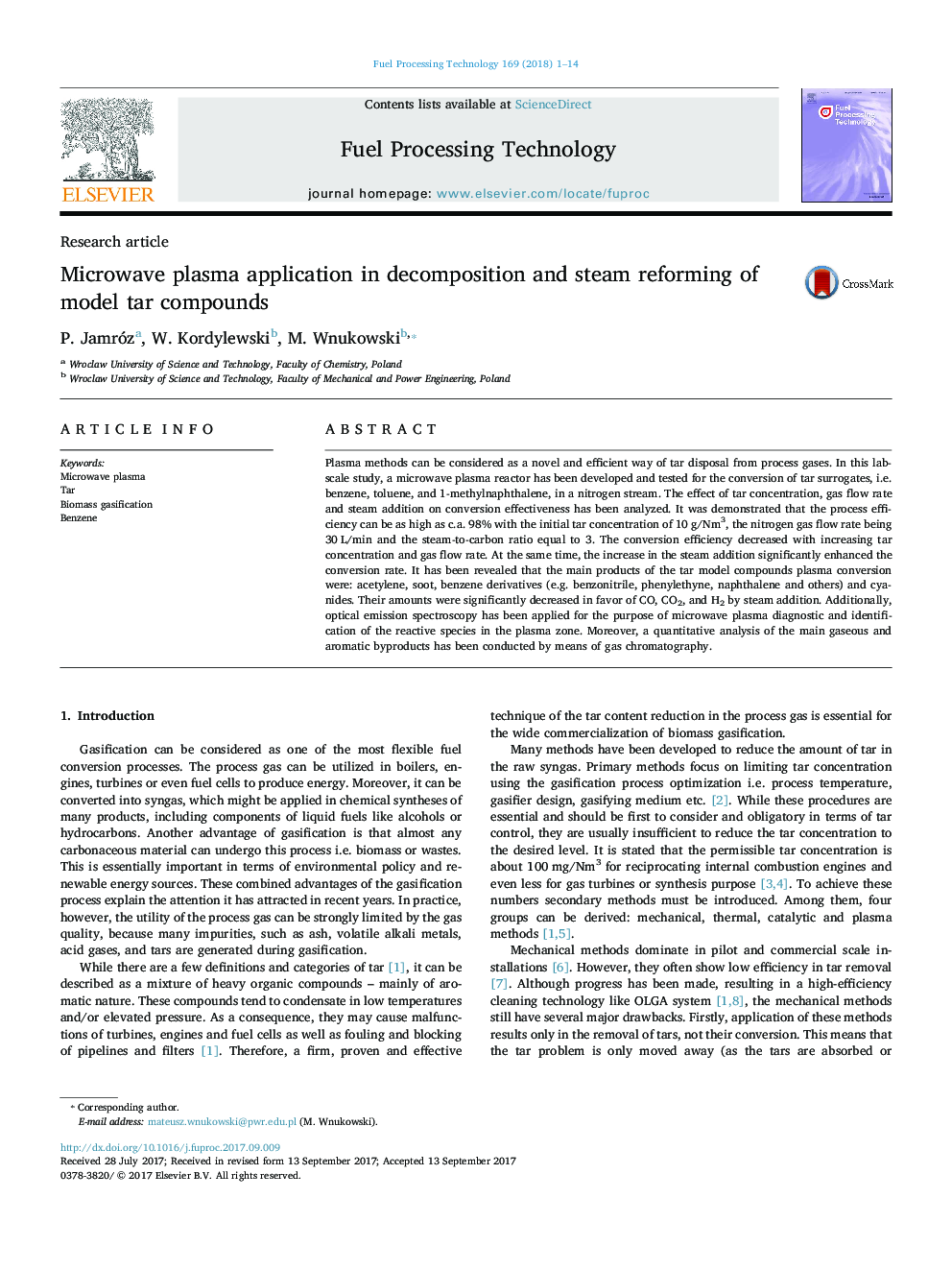| Article ID | Journal | Published Year | Pages | File Type |
|---|---|---|---|---|
| 4914313 | Fuel Processing Technology | 2018 | 14 Pages |
â¢A microwave plasma reactor was tested in terms of model tar compounds conversion.â¢The main byproducts of the decomposition process were soot, acetylene and aromatic compounds.â¢The gaseous, liquid and solid products were analyzed.â¢Addition of steam increased the conversion efficiency and inhibited byproducts production in favor of H2 and CO.
Plasma methods can be considered as a novel and efficient way of tar disposal from process gases. In this lab-scale study, a microwave plasma reactor has been developed and tested for the conversion of tar surrogates, i.e. benzene, toluene, and 1-methylnaphthalene, in a nitrogen stream. The effect of tar concentration, gas flow rate and steam addition on conversion effectiveness has been analyzed. It was demonstrated that the process efficiency can be as high as c.a. 98% with the initial tar concentration of 10Â g/Nm3, the nitrogen gas flow rate being 30Â L/min and the steam-to-carbon ratio equal to 3. The conversion efficiency decreased with increasing tar concentration and gas flow rate. At the same time, the increase in the steam addition significantly enhanced the conversion rate. It has been revealed that the main products of the tar model compounds plasma conversion were: acetylene, soot, benzene derivatives (e.g. benzonitrile, phenylethyne, naphthalene and others) and cyanides. Their amounts were significantly decreased in favor of CO, CO2, and H2 by steam addition. Additionally, optical emission spectroscopy has been applied for the purpose of microwave plasma diagnostic and identification of the reactive species in the plasma zone. Moreover, a quantitative analysis of the main gaseous and aromatic byproducts has been conducted by means of gas chromatography.
